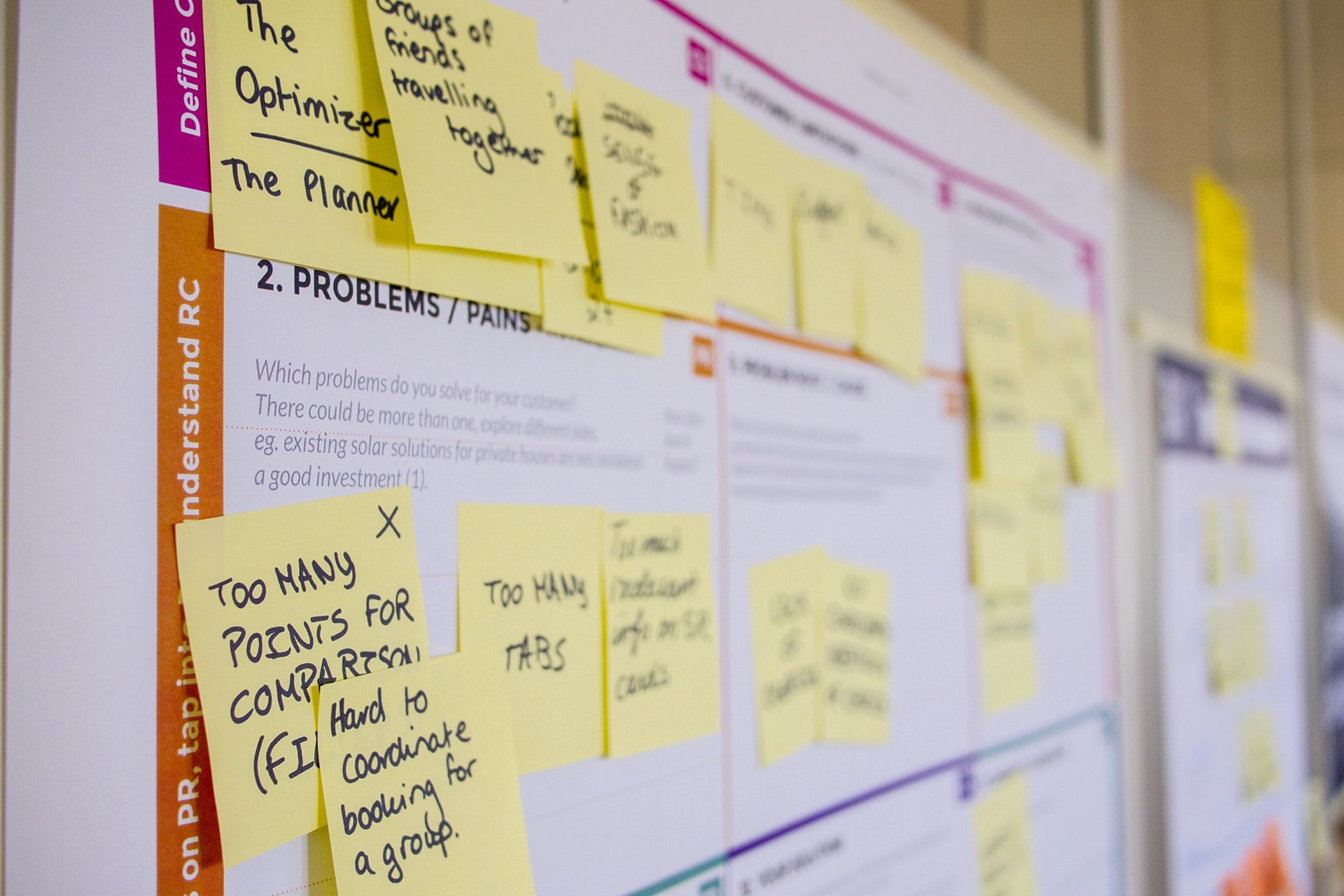In the office or a remote environment, how your team performs is crucial for your company’s success. As companies around the world hire more remote workers or adopt hybrid systems, managers and team leaders have to shift the ways they manage performances. Among other details, it includes effective use of online tools and technology, as well focus on communication, engagement and productivity.
Using performance management as a strategic tool helps managers to align the employees’ performance to achieve the organizational goals. In other words, the manager promotes communication, sets expectations and pushes employees to increase their performance and therefore, contributing to improving the overall results for the company. If the process goes well, employees stay motivated to make the best use of their skills and potential driving the team towards the success.
There are a couple of components to the performance management cycle that you as a remote team leader should consider. It all starts with planning when the manager has to define organizational goals, as well as set objectives for the employee. Keep in mind that these objectives need to be achievable and require a reasonable amount of effort from the employee. If they are way overloaded with work, it might negatively affect their motivation, energy levels and performance.
Once the plan is there, the manager starts the monitoring process, checking in with the employees to make sure they are following the plan and do not have any major challenges. Modern-day performance monitoring has become more performance-oriented and even personal.
The next component is reviewing when the manager looks at the results achieved and compares them with the objectives that were set in the first place. During this step, the employee and the team leader can discuss how the process went, what were some of the challenges and how they can be better prepared for the future.
And the last component is rewarding – an important contributor to employee motivation and retention. It helps employees realize that their effort has been recognized and it can make a real difference. During the process the manager can give positive feedback, but throw some constructive criticism as well, to help the team grow.

Why performance management is important for remote teams?
Performance management plays a key role in any working environment, but it is especially important for remote teams that are spread across different countries and time zones. For achieving the best possible results, these team members need to feel engaged, focused and appreciated in the company. Here are a couple of reasons why you as a remote team leader should practice performance management:
Remote employees are more engaged
In a regular office environment, it’s easier to stay engaged because you can quickly chat with the co-worker, ask your team leader a question, be involved in spontaneous group work and so on. But remote team members are working on their own and do not have the luxury of constant interaction not only with the leader but with each other as well. The lack of communication might lead to disengagement and loss of motivation. And without performance management, you as a leader, would not know where everyone is at, who struggles and how far is the team from reaching the goals. But if you constantly check in with remote workers they feel that their work is valued and stay motivated to perform at their best. And you keep track of overall progress.
Sets expectations and accountability
Remote workers have to deal with a lot of distractions, from home chores to noisy cafes and frequent travelling. So it can be difficult to stay on track and meet the deadlines. With effective performance management, you’d be able to set clear expectations right from the beginning, avoid any confusion and know who is responsible for what. While your team members would stay focused and accountable for their actions. They will know what is expected from them and, at the end of the day, how they need to perform.
Improves productivity
Everyone struggles with productivity from time to time, whether you are set in the office, at home or in a co-working space. A decrease in individual productivity can accumulate over time and negatively affect the entire team. The leader that practices performance management knows what skills and strengths employees have and where they struggle the most. Therefore you’d be able to quickly see the minor changes, work together with your remote workers and help improve their performance.
Now that you know why performance management is so important for remote teams, it’s time to learn how to use it effectively.

6 tips for effective performance management for remote teams
Set the goals
Goal-setting is where performance management starts. And how you begin the process can affect the results. As a remote team leader, you should think about aligning individual goals with organizational ones. In other words, what your remote employees are doing should benefit the entire team in the long run. For that, always think about drawing a bigger picture and explain that to your workers.
For example, imagine that you and your remote employee decided that his goal is to record three training sessions a month for the company’s website. The team goal would be to attract more potential customers to the website. And the organizational goal would be to increase yearly revenue and become a top competitor in the field. This simple breakdown would help your remote team members understand the importance of their contribution and the impact they have on the entire company.
Use the right set of tools
As we said earlier, monitoring and reviewing are two crucial components of effective performance management. In a remote team setting these two heavily depend on the communication tools that you decide to use. The right tools could enhance the team’s work, while the wrong tools can cause misunderstandings, mistakes and setbacks.
As a team leader, you are responsible for finding suitable tools for your remote team members and making sure that everyone is equipped for using them. It’s important to make clear what tools you are using right from the beginning and ask others to test them out.
Task management tools help you stay engaged, see who is working on what and check the overall progress. These tools enable you to check the status of each task, write comments, organize and prioritize and many more. They encourage teamwork, accountability, productivity and progress.
There are unlimited options, but we recommend using Monday, Asana or Trello.
Communication tools are equally as important, especially for remote teams. Imagine having an online meeting using software that does not work properly or does not allow you to share a document. Constant disruption in communication can negatively affect productivity both on individual and team levels.
If you are looking specifically for performance management tools, it’s worth considering 15five and Impraise. Through these, you can track performances, do regular check-ins, and even provide real-time feedback.

Schedule regular one-on-one meetings
Remember how we mentioned that in the modern world performance management has become more personal. You would struggle a lot managing Gen-Z and millennials without personal connections with them. The key is to understand your remote employees beyond their daily work. It would help you find out more not only about their skills, but know their characters with important details such as what motivates them. And what is the better way to do so than to set up one-on-one meetings?
One-on-one meetings are especially important for managing remote teams because employees cannot “walk into your office to ask a question”. And you also cannot walk up to their desks and ask about their progress. With one-on-one meetings, you can keep track of how your remote employees are doing, get to know their talents and plan for future goals. It can also be a safe space where you discuss not only achievements but failures and mistakes as well.
Usually, managers have such meetings once a week or once in two weeks. You could set up a schedule that fits your team members and work specifics. As for the questions, think about creating a comfortable, open atmosphere where employees would gain confidence, learn from their mistakes and work on their skills. Bring personalization to your meeting and start by talking about their lives beyond work. For example, if they have a pet ask about it, or find out what hobbies they practice or how they spent last weekend. If used well, one-on-one meetings are a very powerful tool in performance management.
Here are some of the questions we recommend asking:
- What you did do well this week?
- Where do you struggle the most?
- How do you feel?
- How can I help you?
- What do you plan to do for the next week?
Development opportunities for your team
The modern-day working environment does not involve just daily work. More and more companies, both small and big, provide development opportunities for their employees. And as a result, they learn new skills, gain knowledge and improve their performance, while benefiting the entire team.
Remote employees that have development opportunities, are trained better and will be able to take on more responsibilities in the future.
There are a couple of options you could offer to your remote employees:
- Financing of training sessions and online courses of their choice, both work-related and non-work-related;
- Webinars;
- Conference participation;
- Mentorship;

Appreciate good work
The last component in the performance management cycle is rewarding. Employees want to be appreciated if they have performed better than others. It increases job satisfaction and gives them the motivation to work harder in the long run. And if they are appreciated for hard work, employees are more likely to perform way better in the future.
There are a couple of ways for appreciation. You can certainly do it during a one-on-one meeting and give the discussion a more personal touch. Or you could choose to host a team meeting and mention those who have performed well that week. It could set a valuable discussion where remote employees could share ideas and talk about each other’s cases. Both ways are accepted, as some people prefer to be appreciated among peers, while others want to have a private conversation.
There are many ways to recognize your remote team’s performance:
- A congratulatory email;
- Professional development opportunities;
- Send a thank you card;
- Extra days off or extended breaks;
- Various discounts and gift cards;
- A DIY online certificate;
- An invitation to online lunch;
Stay flexible
Remote employees choose to work remotely for a reason – they want to have flexible schedules and be more independent. Even more, autonomy is among the main workplace motivators, based on many surveys. Your performance management system should align with those characteristics of remote work. This means it should not include an excessive amount of check-ins or non-stop slack messages.
On the one hand, you should track your employees, but on the other hand, trust them with working independently on their own time. If remote workers feel that they are constantly monitored and controlled, they are likely to lose motivation and seek jobs somewhere else.
Conclusion
Starting with managing your remote team’s performance can be a challenge at first. Especially when you have to decide how to monitor and track the process using various tools and techniques. In addition, you should consider the benefits and specifics of remote working such as autonomy and flexibility. It’s important to create a system that does not harm any of them, while also boosting productivity, engagement and motivation. But with the right system in place, you could help your remote employees become the best version of themselves. A more skilled and better-equipped team could lead your company towards its goals.












